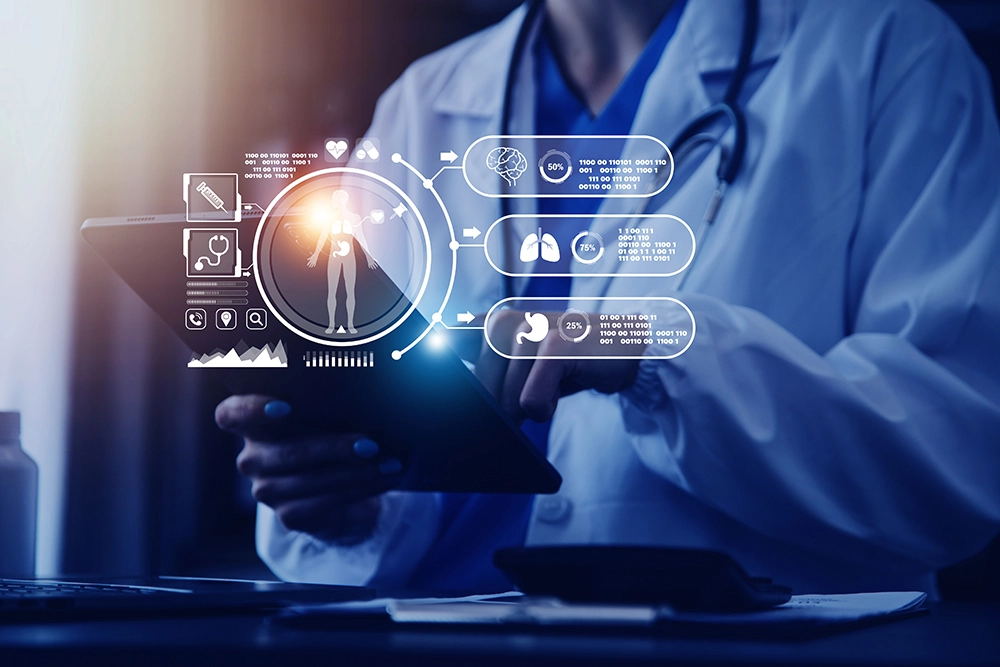
Connects patients with healthcare providers virtually and allow patients to schedule appointments, consult with doctors via video calls, share medical records securely, and receive prescriptions electronically. It also includes features like AI- driven symptom checker and medication reminders to enhance patient care. This improves accessibility, reduces waiting times, and facilitates remote consultations, particularly beneficial in rural areas or during emergencies.

To streamline patient data management. The system allows healthcare professionals to securely store, access, and update patient information digitally. Features include patient history, medication records, lab results, imaging reports, and treatment plans. This improves efficiency, reduces errors, enhances coordination among healthcare teams, and ultimately leads to better patient outcomes. Additionally, EHR systems facilitate data analysis for research purposes and help in identifying trends to improve population health.

Advanced analytics platforms to analyse large volumes of healthcare data. This can identify patterns, trends, and correlations within patient records, enabling healthcare providers to make data-driven decisions, predict disease outbreaks, optimize treatment protocols, and improve population health management.

Provide personalized healthcare recommendations, answer medical queries, and assist healthcare providers in diagnosis and treatment planning. These assistants leverage machine learning algorithms to continuously improve their accuracy and effectiveness, ultimately enhancing patient care and reducing healthcare costs.

Secure healthcare data, including patient records, medical transactions, and supply chain management. Blockchain ensures data integrity, transparency, and privacy by creating tamper-proof, decentralized ledgers that cannot be altered or manipulated. This enhances patient trust, compliance with regulatory requirements (such as HIPAA), and interoperability among healthcare systems.

Enable remote consultations between patients and healthcare providers through video conferencing, messaging, and virtual visits. These platforms support real-time communication, collaboration, and information sharing, improving access to healthcare services, particularly in underserved or rural areas.